Discover 11 hidden attractions, cool sights, and unusual things to do in Treviso (Italy). Don't miss out on these must-see attractions: Palazzo dei Trecento, Stadio Omobono Tenni, and Teatro Mario Del Monaco. Also, be sure to include Fontana Delle Tette in your itinerary.
Below, you can find the list of the most amazing places you should visit in Treviso (Veneto).
Table of Contents
Palazzo dei Trecento
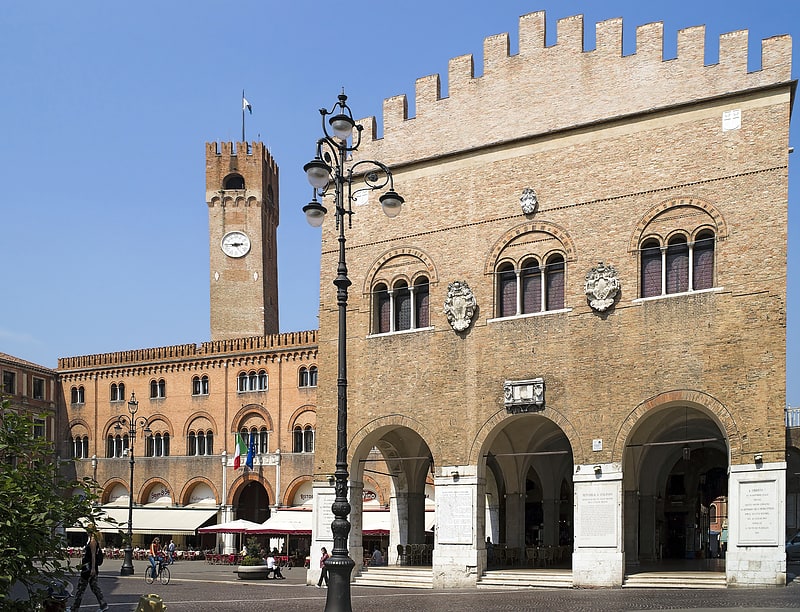
Historical landmark in Treviso, Italy. Palazzo dei Trecento is a building in Treviso, Veneto, northern Italy, located in the Piazza dei Signori. It is home to Treviso municipal council.
The palace was erected in the 13th and 14th centuries, as the seat of the Maggior Consiglio ("Highest Council"), the main administrative council in the city. It was designed by the venetian architect Gabriele Saccon. Built in brickworks, it has two floors, the lower one entered through a loggia. The upper floor has three triple mullioned windows.
Internally, there are remains of frescoes painted from the 14th to the 16th centuries by Venetian artists, depicting coat of arms and themes of civil power and justice. On the southern walls are a Madonna with Child and "St. Liberalis with Peter and the Cardinal Virtues.
In 1944 the palace was bombed by Allied planes and nearly destroyed.[1]
Address: Piazza dei Signori, 31100 Treviso
Stadio Omobono Tenni
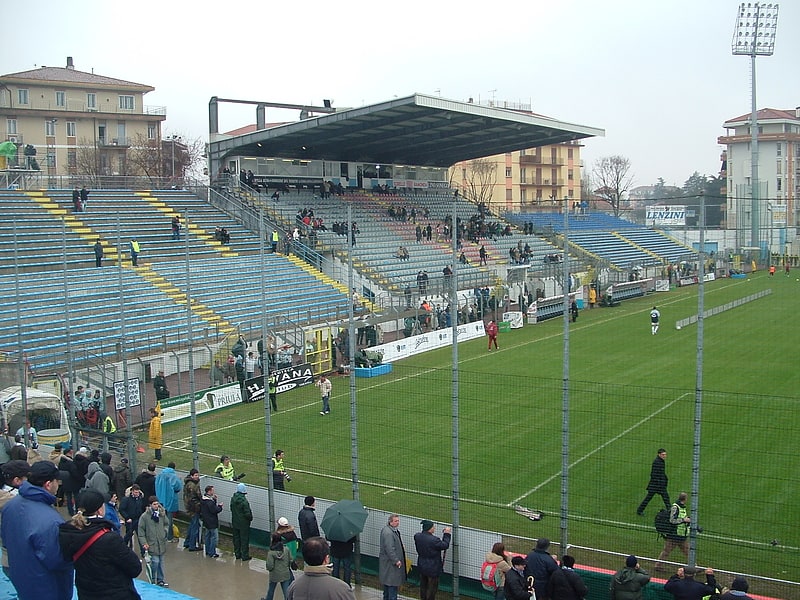
Stadium in Treviso, Italy. Stadio Omobono Tenni is a football stadium in Treviso, Italy. It is currently the home of Treviso F.B.C. 1993. The stadium was built in 1933 and holds 10,001. After the inauguration in 1933, a friendly match between Treviso F.B.C. and Udinese was held, which was followed by a friendly against the Italian National Team. In the 1940s and 1950s the capacity of the stadium was of 12,000 seats.[2]
Address: Via Ugo Foscolo, 3, 31100 Treviso
Teatro Mario Del Monaco
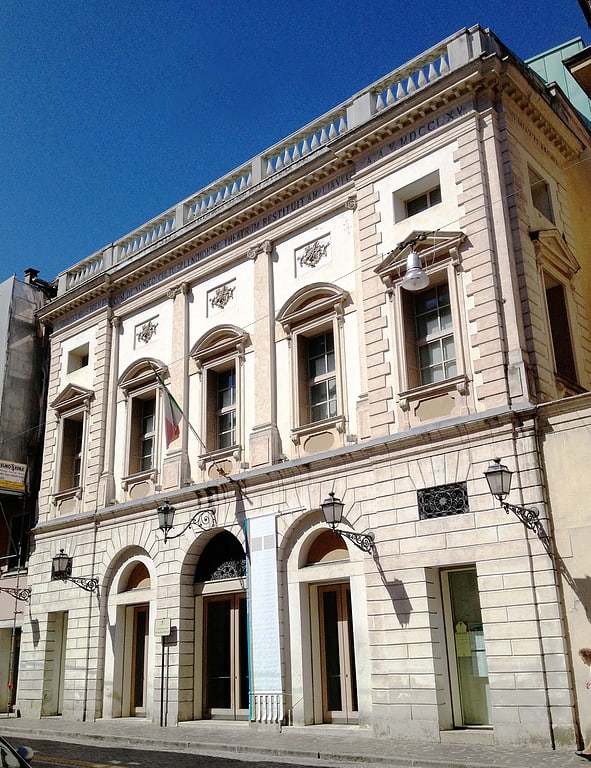
Opera house. The Teatro Mario Del Monaco is an opera house and theatre in Treviso, Italy. It was previously known as the Teatro Onigo from 1692 to 1846, the Teatro Sociale from 1847 to 1930, and the Teatro Comunale from 1931 to 2011. In 2011, it was renamed in honour of the Italian tenor Mario Del Monaco who lived in Treviso from 1975 until his death in 1982. It is located in the historic centre of the city on the Corso del Popolo and since 2019 has been run by the Teatro Stabile del Veneto which also runs the Teatro Goldoni in Venice and the Teatro Verdi in Padua.[3]
Address: 31 Corso del Popolo, Treviso
Fontana Delle Tette
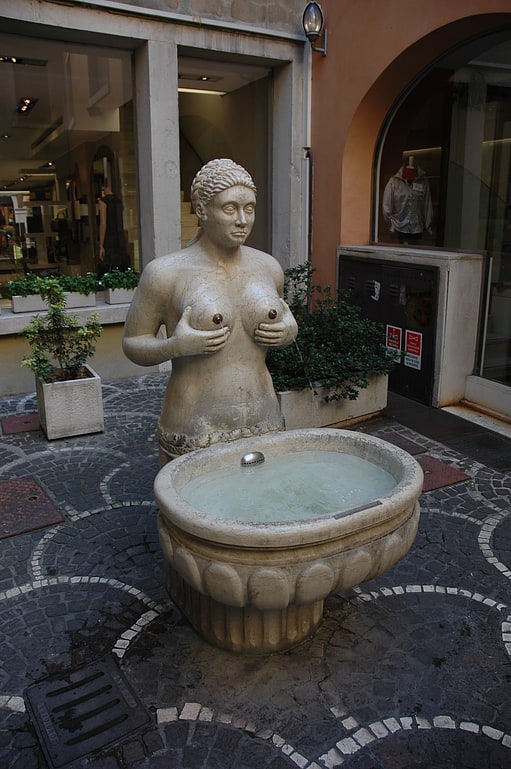
Also known as: Fontana delle Tette
Fountain in Treviso, Italy. The Fontana Delle Tette is an old fountain carved of Treviso, which under the rule of the Venetian Republic pours white and red wine during special celebrations. The names translates into English as "The Fountain of Tits". It features a topless woman squeezing her breasts and water coming out of her nipples.
The Fontana Delle Tette was built in 1559 on the orders of Alvise Da Ponte, at the time mayor of the Republic of Venice as a result of a severe drought that struck the city of Treviso and the surrounding countryside. Originally the statue was placed inside the Praetorian Palace, in via Calmaggiore. Every year of the autumn of the Serenissima Republic of Venice, in honor of every new Podesta, red wine flowed from the nipple of one breast, and white wine from nipple of the other breast, and all citizens could drink the wine for free for three days.
There is a plaque near the fountain that says:
Located at the beginning of Calmaggiore street and so has described her Matteo Sernagiotto (1810-1888):.. lovely lady over the marble basin marina with both hands was squeezing her swollen breasts, and two living fountains of crystal clear water, thanks to industrious contraption with wheels, removed to the nearby Cagnano, offering plenty of liquor houses and shops nearby. Alvise Da Ponte judge, following an extraordinary drought, built in 1559, and from that time until the fall of the Venetian republic, every year for three consecutive days, to celebrate the entry of a new mayor, the fountain poured from one Stern undiluted white wine, black and the other, for the joy of the people cheering.. It was rebuilt in 1989.[4]
Address: Cortile della Galleria della Strada Romana, 31100 Treviso
Treviso Cathedral
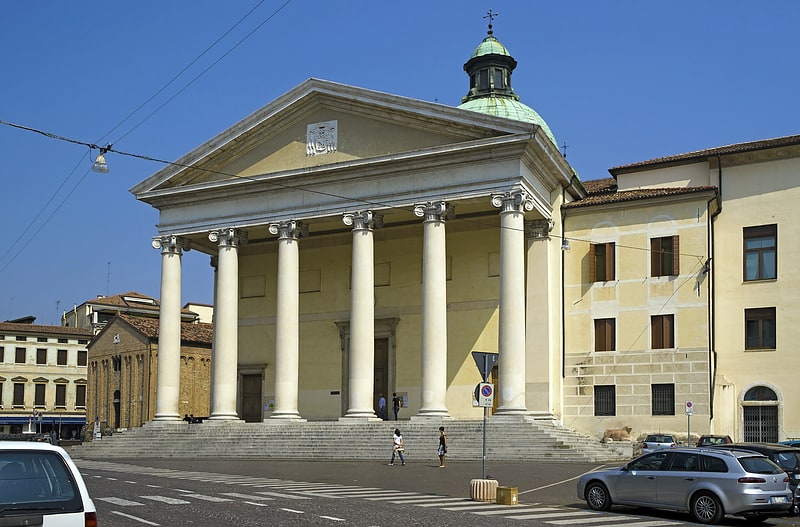
Also known as: Duomo di Treviso
Imposing neoclassical cathedral. Treviso Cathedral is a Roman Catholic cathedral in Treviso, Veneto, northern Italy, dedicated to Saint Peter. It is the seat of the bishop of Treviso.[5]
Piazza dei Signori

Historical landmark in Treviso, Italy. Piazza dei Signori is a city square in Treviso, north-eastern Italy.
It takes its name (meaning "Lords Square" in Italian) from the palaces of lords the former seignory of Treviso which face it. They include:
- Palazzo del Podestà with the Civic tower (13th century), which was the lordship's seat
- Palazzo dei Trecento
- Palazzo Pretorio (with a 17th century façade)
- Original seat of the Municipal Library and the Municipal Gallery (1847)
The Square also features several sculptures of Lion of Saint Mark, a symbol of the former domination of the Republic of Venice on Treviso.[6]
Walls of Treviso

Treviso's city walls are the complex of defensive works erected over the centuries to defend the city from enemy attacks.
Lodge of Knights
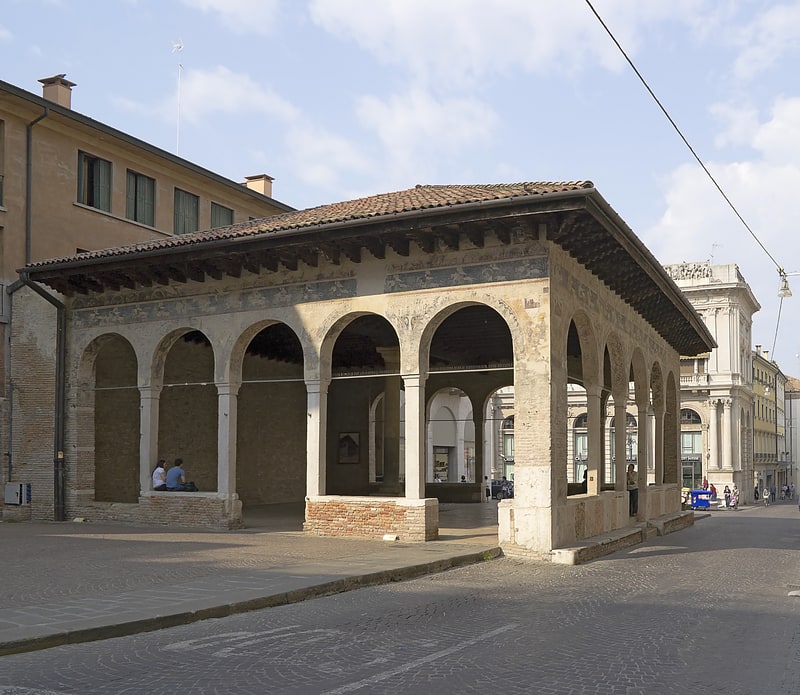
The Knights' Lodge is one of the most representative buildings in Treviso's historic center. It is located at the intersection of Via Martiri della Libertà and Via Indipendenza, probably on the site of the ancient forum of Roman Tarvisium.
A symbol of the political power assumed by the nobles during the period of the Free Commune, it was built during the podesteria of Giacomo (or Andrea) da Perugia (1276-77) as a place for conventions, conversations, and games for the nobility, the Knights, precisely.
The Loggia is an example of Treviso Romanesque, here influenced by Byzantine architecture.
Casa dei Carraresi
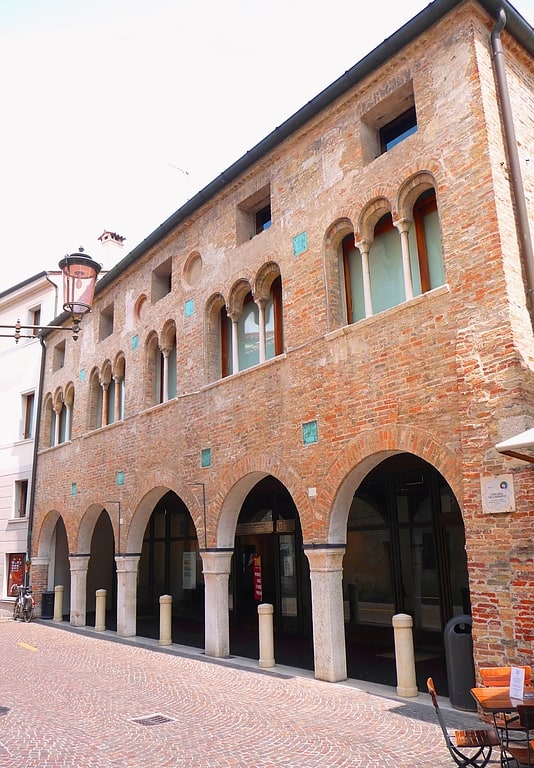
Ca' dei Carraresi is a medieval palace located in the historic center of Treviso, between the Cagnan River and Via Palestro, the site of important exhibitions and conferences.
Address: Via Palestro 33/35, 31100 Treviso
Isola della Pescheria
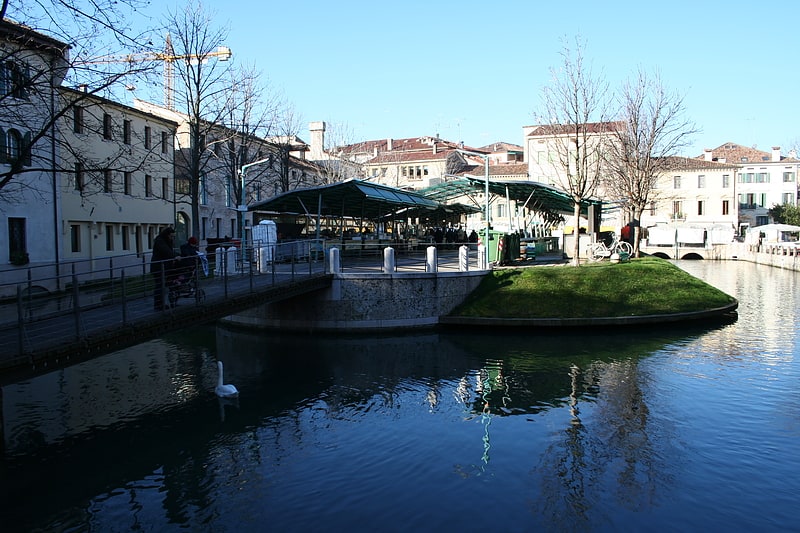
Pescheria Island is a small river island in Treviso's historic center, lapped by the Cagnan Grando. As its name suggests, it houses the city's fish market.
In the mid-nineteenth century, the need arose for redevelopment of the then Lords' Square, a characteristic area of the city. This need was driven by sanitary and structural reasons. Moving the location of the foriere market, which was a source of disturbance to the senses of citizens. The fish market, in fact, carried with it smells that were unpleasant for the inhabitants of that area. Pietro Liberali had the intuition for the new arrangement and it was implemented in 1856, during the Austrian rule of the city, at the initiative of the then mayor. The work was designed by municipal engineer Francesco Bomben, who combined the three natural islets already present in the canal, downstream from the San Parisio bridge, into a single island. The new arrangement proved optimal as it benefited from running water and a more appropriate distance from inhabited buildings. The fish market, previously held in the square in front of Monte di Pietà, was therefore moved to this location. The connection to the market is an iron bridge.
The design of the last redevelopment (2002), which included the resurfacing of the paving and market stalls, was signed by architect Toni Follina. This renovation maintained the original layout, allowed the fish stalls to be covered, and this intervention gave the square a way to acquire public character.
In the vicinity of the market are numerous businesses, public places and stores that make the area very busy, especially in the morning. This area is well representative of the entire city with its colors and scents of typical local dishes.
Seminario Vescovile di Treviso
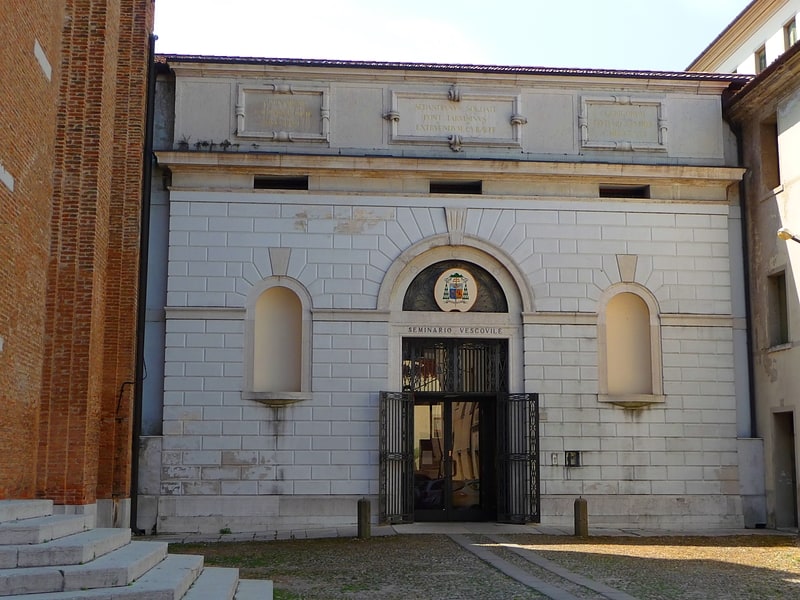
The Episcopal Seminary is the institution of the diocese of Treviso where future presbyters are trained for pastoral service in the same diocese. It is composed of two entities: the minor seminary and the major seminary. The structuring of the seminary into four formation communities dates back to 1975.
As of September 8, 2021, it is governed by Fr. Luca Pizzato.
Address: Piazzetta Benedetto XI 2, 31100 Treviso